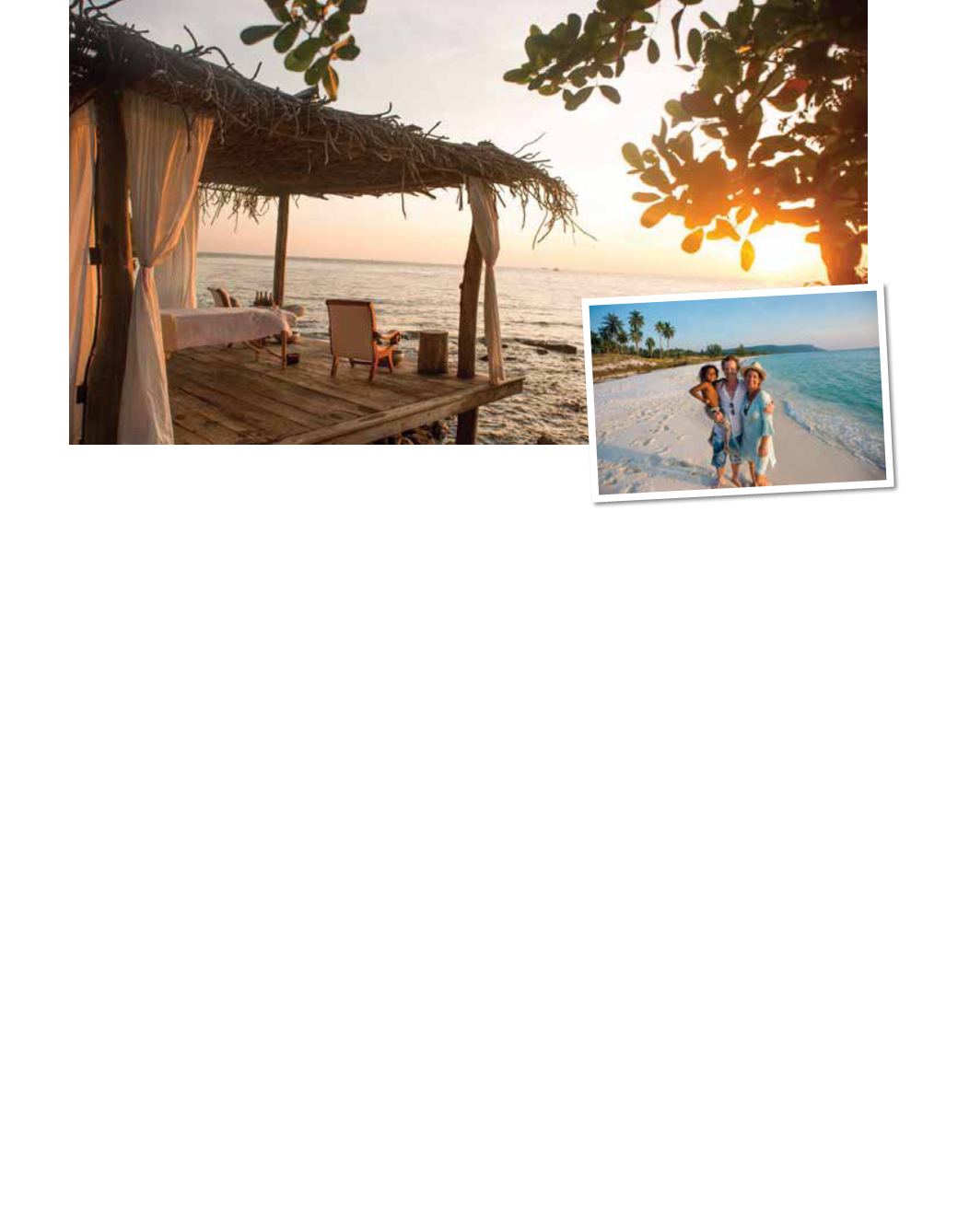
Rong Archipelago is the country’s
new travel frontier. The biggest
of the islands in the archipelago
is Koh Rong, almost exactly the
same size as Hong Kong Island at
78 square kilometres. Elongated
in form, stretching from southeast
to northwest, it is predominantly
hilly with a small mountain in
the northwest. Almost completely
forested, with countless streams and
waterfalls, the island is fringed by
approximately 43 kilometres of sandy
beaches. The island is also rich in
mangrove swamps, and is home to
four villages. The main livelihood
of inhabitants is fishing, as the reefs
surrounding the islands support
an abundance of marine life. An
increasing number of locals have
found jobs in the growing tourism
sector however, particularly in the
villages of Koh Tuich and Sok San.
This development is very recent,
as when the Hunters first heard of
the islands in 2006 from a fisherman
friend, even Wikipedia had nothing
to say about them. After proving
their existence via Google Maps
and with curiosity well piqued, the
Hunters decided to see the islands
for themselves and hired a boat
from Sihanoukville. (Named for
Cambodia’s late king, this port town
is less than royal in appearance today
due to a very backpacker-centric
tourism model).
Four hours from the mainland by
fishing boat or long-tail ferry (but
only one hour by powerful speedboat),
the islands are truly remote, and the
Hunters were completely taken by
their beauty and potential. They were
equally dismayed by the lack of waste
management and the toll being taken
by unrestricted fishing and farming
practices. Mangroves were being
ripped out to make charcoal, forests
cleared to plant palms, sea grass
removed to expose sandy banks, and
said sandy banks covered in plastic
trash. And at the time, none of this
was tourism related.
On the last day of their holiday,
the couple stopped on the beach of
Koh Ouen, one of two tiny islands
off the northeast shore of Koh Rong.
Half cleared for a coconut plantation
and marred by a rubbish heap of
epic proportions, Rory and Melita
nonetheless jumped at the chance to
purchase the islands when the resident
family offered to sell, wishing to
move to the mainland. Well versed in
purchasing property in Cambodia,
having restored 27 colonial buildings
in Phnom Penh, the Hunters were
able to successfully navigate the
relentless red tape involved. By 2007,
they were the proud owners of the
twin islands they named ‘Song Saa’ –
Cambodian for ‘sweethearts’, but the
work had just begun.
A foundation of hope
Restoring Koh Ouen to its natural
glory (Koh Bong had luckily never
been touched) was going to require
serious manpower and a number of
services that didn’t yet exist in the
archipelago. The Hunters approached
the villagers of Prek Svay, the closest
village to Song Saa, to recruit
assistance in clearing the rubbish
from Song Saa. This collaboration
led to the founding of Koh Rong’s
first waste management centre, which
subsequently undertook the clearing of
approximately two decades’ worth of
rubbish from Prek Svay itself. Needless
to say the villagers gave the Hunters
their full support in future endeavours.
These included the designation of
fishing zones for the four villages and
the establishment of Cambodia’s first
marine reserve. This was expanded to
400 square kilometres in early 2015
with the endorsement of the Prince
Albert II of Monaco Foundation.
As the replanting of Song Saa’s
indigenous forests began to bear fruit
(today you would never know it had
been necessary), so other projects
54


